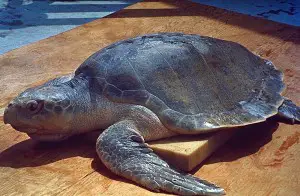
Fact 1: Sea turtles are highly adapted to the ocean even though they need air to live. The size of Sea turtles varies widely with just 80 – 100 pounds to about 1,000 pounds having large leather backs.
Fact 2: Sea turtles can be seen in almost all of the ocean basins of the world gathered on tropical and subtropical beaches. They swim across entire oceans or migrate long distances to feed.
Fact 3: Some loggerheads are found to be living In Japan and migrate for food to Baja California Sur and come back.
Fact 4: The leatherbacks of Sea turtles are helpful for tolerating cold temperatures of water below 40 degrees F.
Fact 5: Sea turtles spend most of their lifetime in the sea except when the females come on to the shore to lay eggs. They lay eggs many times in the season once every two to five years.
Fact 6: The young turtles are released after about 60 days from the eggs, and they move slowly towards the ocean waters from their sand nests.
Fact 7: The juvenile forms of Sea turtles spend their primary years in open ocean waters while they move to the estuaries and protected bays after some time.
Fact 8: The various species of Sea turtles feed on different diets. The Leatherbacks will eat soft-bodied animals and jelly fish while Green Sea turtles eat sea grasses. Loggerheads feed on hard-shelled animals like clams and crabs. The Hawksbill turtles will depend on sponges and various other invertebrates for their food. Crabs are the primary diet of the Kemp’s Ridley turtles.
Fact 9: The body of Sea turtles is covered by a shell called a carapace. The head and flippers cannot be retracted. Except in Leatherbacks, all other species of Sea turtles have their bodies covered by hard, keratinized plates known as scutes. The number of scutes and their arrangement on the carapace vary depending on the species.
Fact 10: The color of Sea turtles ranges from pale green to black. No physical differentiation is seen between males and females. The adult males possess wider and longer tail than females.










Leave a Reply